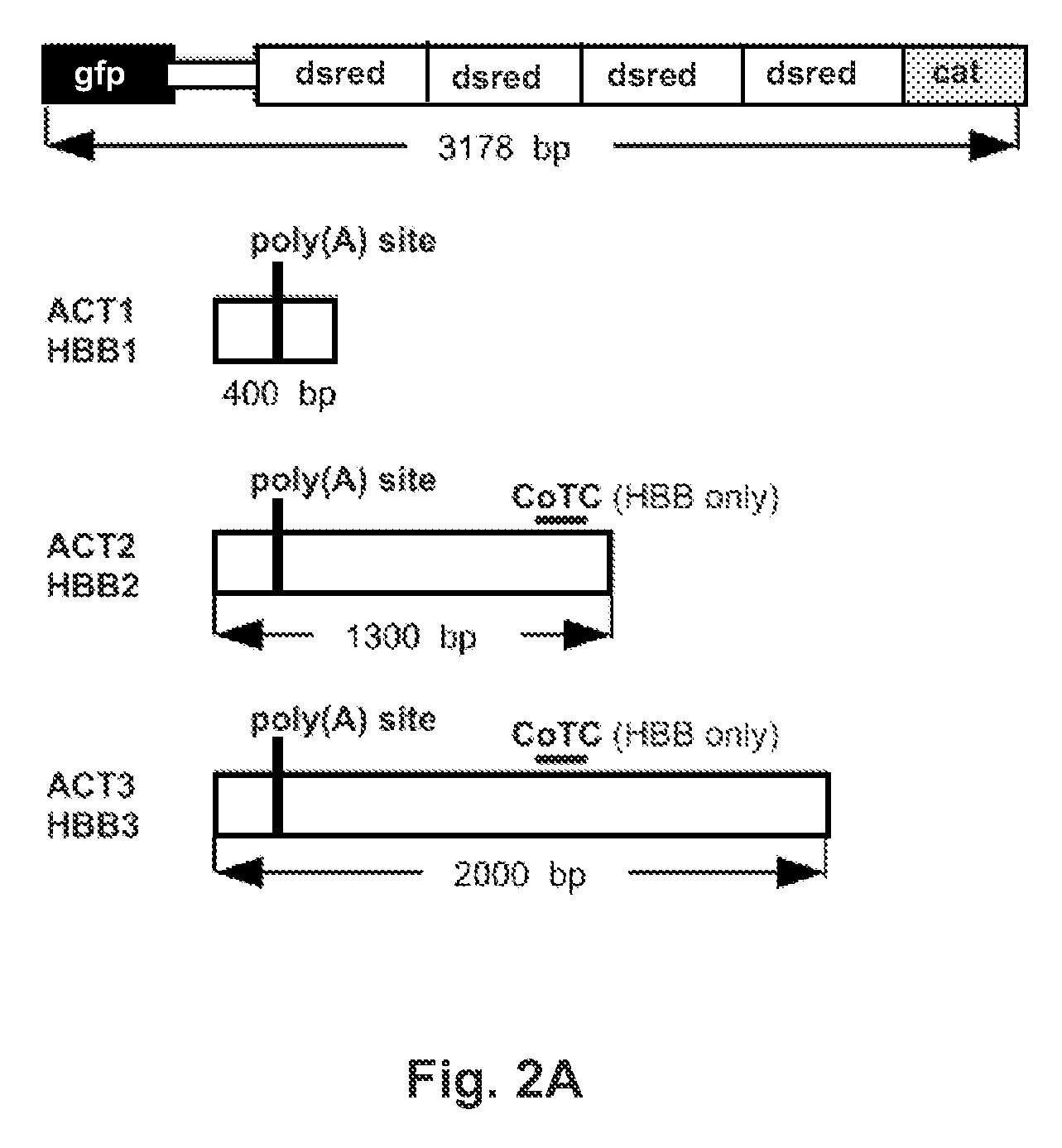Reporter for RNA Polymerase II Termination
a technology of rna polymerase and reporter, which is applied in the field of reporter for rna polymerase ii termination, can solve the problems of difficult experimental measurement, affecting the expression of neighboring genes, and wasting energy, and achieves the effect of shorting the xrn2 activity and reducing the effectiveness of transcription termination
- Summary
- Abstract
- Description
- Claims
- Application Information
AI Technical Summary
Benefits of technology
Problems solved by technology
Method used
Image
Examples
example 1
Materials
[0066]Restriction enzymes were purchased from New England Biolabs (Ipswich, Mass.). All tissue culture reagents were purchased from Invitrogen (Carlsbad, Calif.) unless otherwise stated. All other chemicals were purchased from Sigma unless otherwise stated.
[0067]Construction of Plasmids / Vectors
examples 2-6
[0068]We constructed a tandem reporter construct in pcDNA5 / FRT / TO (Invitrogen, Carlsbad, Calif.). The CMVIE promoter in pcDNA5 / FRT / TO contained two Tet-operator sequences at the start of transcription, working in conjunction with the constitutively-expressed tetracycline repressor in the T-REx cell lines (Invitrogen). To insert the reporters downstream of the pcDNA5 / FRT / TO promoter the plasmid was digested with HindIII & BamH1; and a HindIII & BamH1 fragment containing firefly luciferase (FLUC) from pGL3-control (Promega, Madison, Wis.) was inserted to make pcDN / FRT / FL.
[0069]A 160 bp self-cleaving ribozyme sequence was PCR amplified with primers that add SpeI & EcoRI sites 5′ and MfeI, BglII & XbaI sites 3′. The 160 bp sequence was as described in Grabczyk E, Usdin K (2000) The GAA•TTC triplet repeat expanded in Friedreich's ataxia impedes transcription elongation by T7 RNA polymerase in a length and supercoil dependent manner. Nucleic Acids Res 28: 2815-2822; and Grabczyk E, Mancus...
examples 7-11
[0073]The polyadenylation regions of the human beta-globin (HBB, NM—000518) and beta-actin (ACTB, NM—001101) genes were isolated via PCR. A first PCR round used primers generated by Primer3 to amplify sequences from genomic DNA samples. In the numbering scheme used here, the poly(A) addition site for each gene is numbered +1, which corresponds to base 5203272 on human chromosome 11 for HBB, and to base 5533305 on human chromosome 7 for ACTB, using the March 2006 numbering system. Primer sets were paired as follows, HBB-513F with HBB+2390R, and ACT-449F with ACT+1826R. The second PCR round used product from the first round, and employed new primer sets that generated restriction enzyme sites (Nhe I and Not I) at the very ends of the product for later use for cloning. HBB-200NotF primer was paired with each of the following: HBB+200NheR, HBB+1100NheR, and HBB+1800NheR to make products of 400, 1300, and 2000 base pairs, respectively, named HBB1, HBB2, and HBB3. The ACT-200NotF primer w...
PUM
| Property | Measurement | Unit |
|---|---|---|
| Ratio | aaaaa | aaaaa |
| Elongation | aaaaa | aaaaa |
Abstract
Description
Claims
Application Information
 Login to View More
Login to View More - R&D
- Intellectual Property
- Life Sciences
- Materials
- Tech Scout
- Unparalleled Data Quality
- Higher Quality Content
- 60% Fewer Hallucinations
Browse by: Latest US Patents, China's latest patents, Technical Efficacy Thesaurus, Application Domain, Technology Topic, Popular Technical Reports.
© 2025 PatSnap. All rights reserved.Legal|Privacy policy|Modern Slavery Act Transparency Statement|Sitemap|About US| Contact US: help@patsnap.com



